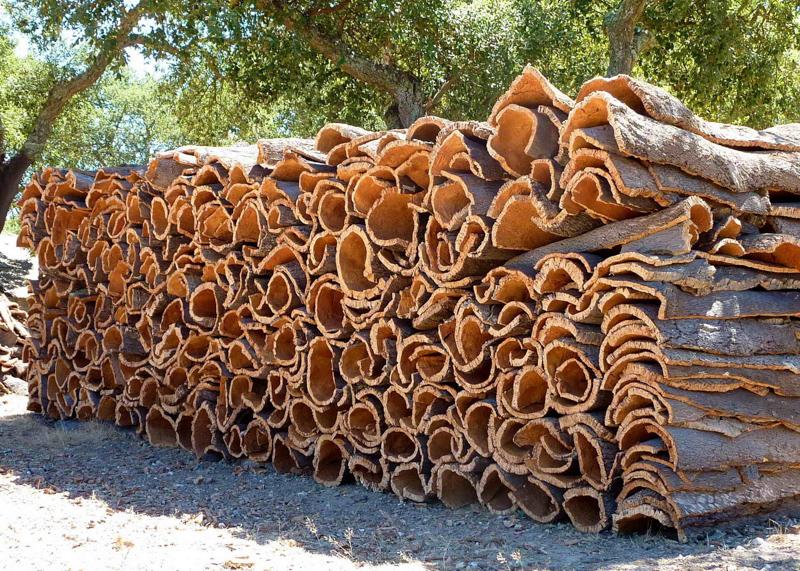Your Cart is Empty
Free shipping on orders $100+





Cork comes from an oak tree and is grown in the Mediterranean. Cork is harvested by removing the bark of the tree approximately every 9 years. It’s the only tree in the world where you can remove all its bark without harming the trees. This harvesting practice has been taking place for over 1,000 years and is considered the most sustainable and environmentally friendly harvesting practice in the world.
Why Yoga Products made of Cork?
Cork is one of the most magical and sustainable materials on our planet.
Cork is:
Harvested, Not Cut Down
Cork is made from the bark of a cork oak tree, not the tree itself, so no trees are cut down. Bark is harvested from the tree every 9-12 years by hand. Completely renewable and sustainable, harvesting bark does not harm the tree. Each time cork is harvested; cork bark regenerates itself. Cork trees live up to 300 years.
Positive for Climate Change
Harvesting cork bark assists in the absorption of CO2 – a greenhouse gas that causes climate change. In fact, harvested cork trees absorb 3-5 times more CO2 than non-harvested trees. Cork oak trees in Portugal alone help offset 10 million tons of carbon every year. Cork trees are also important producers of oxygen.
Supporting Biodiversity
Approximately 6.6 million acres of Mediterranean cork forest extend across Portugal, Spain, Algeria, Morocco, Italy, Tunisia and France. These oak forests support one of the world’s highest levels of forest biodiversity, second only to the Amazonian Rainforest. They are home 42 bird species, including the endangered Iberian Imperial Eagle. Hence, our name, 42 Birds!
Biodegradable and Recyclable
Cork comes directly from nature, so it biodegrades completely and can be easily recycled without producing any toxic residues. Any cork waste from production of the mats is grounded and reused to make other products and we use recycled cork in our products when possible!
Preventing Forest Fires
The thick bark on cork oak trees acts as a protective barrier against fire and heat. This protection extends to the forest itself and the animals within it. In fact, the scientific name for these species of tree is pyrophytes – which literally mean ‘fire plants’.
0% Waste
Every part of the cork bark is used. Items like bottle stoppers are stamped out of the cork. The rest is ground up for floors, fabrics, boards etc. Grinding cork creates a dust. That dust is vacuumed up and packed into containers and compressed into biomass. Factories burn that biomass and provide 60% of their own energy to run the plants.
How Cork can improve your Yoga practice?
A perfect balance of cushion and traction, plus beautiful, eco-friendly and lightweight - Cork is the next big thing for Yogi’s in the know!
Cork is:
Grippy
These eco-friendly mats are known for having unparalleled grip. Many yogis have converted to cork for its persistent non-slip surface, even during the sweatiest hot yoga. Cork contains a waxy substance called Suberin, that helps increase traction when wet. The more you sweat, the better grip you have! You will never have to use a towel during yoga practice, even hot yoga!
Lightweight, Yet Durable
Cork provides yogis with the best of both worlds - a super sturdy, durable mat that is also much lighter weight than rubber and easy to carry to yoga class. Cork is an extremely unique material, due primarily to its unmatched cellular structure. Due to its minuscule air-filled cell pockets, cork is a lightweight, low-density material that has incredible buoyancy. In fact, 50% of cork is air. The durable material is one of the most insulate of any natural material, due to the low conductivity of heat, vibrations, or sound.
A Comfortable, Cushioned Surface
Cork surface is warm under foot and insulates heat and cold. Its unique cellular structure with millions of cells enclosed with a gaseous substance, absorbs energy on impact and quickly regains its structure, therefore provides a comfortable cushioned surface that gives a soft feeling to the feet and joints which is ideal for long hours of practice.
Antimicrobial
Cork has great antibacterial properties, that help keep it clean. One studied showed almost 100% bacterial reduction of Staphylococcus aureus, after 90 minutes of incubation. This makes cork surface practically self cleaning, helping to promote the healthiest surface for your practice.
Anti-Static
Cork naturally tends to repel dust, hair, water and other small particles from its surface. In nature, the Suberin in cork is also known to repel small insects.
Hypoallergenic
The close-knit structure of cork also resists pollen, dust, pet dander and other allergens. Cork will natural resist mold and mildew, which not only supports your health, but will also lead to a long lasting mat.
How can I help?
It takes a village (and forest and luckily helping isn't very hard!
Support by:
Buying Wine with Cork vs Screw Caps
Cork stoppers are punched out of strips of cork bark. Simple as that. The manufacture of screw caps and plastic stoppers, on the other hand, involves higher non-renewable energy consumption (not to mention the production of toxic by –products).
Keeping Demand High
Cork is a vital source of regional rural employment. Cork oak woodlands provide employment and guarantee the survival of local communities. It has been estimated that more than 100,000 people in the seven Mediterranean cork-producing countries depend directly and indirectly on cork economies. This makes cork surface practically self cleaning, helping to promote the healthiest surface for your practice.
Recycling Your Cork
If you are interested in recycling your cork products, you can find a dropbox by you from our partners at Cork Forest Conservation Alliance.